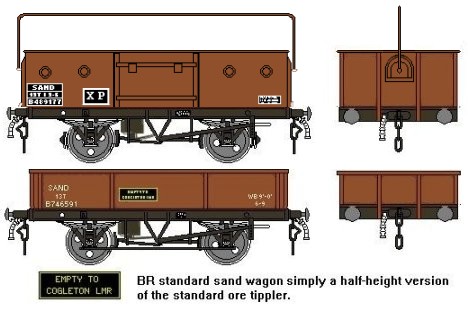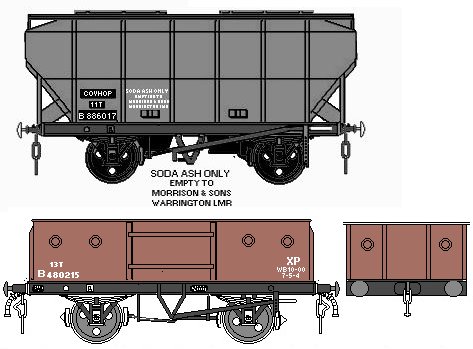International Good Guys ~ Making the world a better place since 1971 ~ Site maintained by
All material Copyright © Mike Smith 2003 unless otherwise credited
| Return to Loads and Handling Index |






Slag chippings are used in road making probably the biggest use is in surface dressing (tar and chip) the colour when first delivered is light grey somewhere between grey primer and Royal Navy frigate grey. There are references to the use in Bill Hudson's Private Owner Wagons (Oakwood) including pictures of the wagons (TARSLAG). The book indicates the trade started about 1913.
RichC
Varying shades of grey to almost black. Basic slag was the residue from the initial iron-smelting process, I believe, the 'basic' being as opposed to 'acidic', and was due to the amount of limestone used in the smelting. It's still conveyed by rail, the more so since the aggregate tax came out. Trainloads move from both South Wales and Teeside to the SE. My brother-in-law was project engineer on one of the biggest contracts to use it recently- over a million tons from Llanwern to a site in Cardiff Bay, all delivered by rail. In consistency, the material from the furnaces varies between frothy pumice-like and glassy, and is crushed for its final use. I worked many years ago at a BSC plant that only produced small quantities- there it was sprayed with water as it came out, to produce a glass-like powder.
Brian Williams

In J Robin Lidster's book "The Forge Valley Line" he relates that the local Hunt kennels at Snainton used to send dog excrement ("Dog Pures") to Leeds where it was used in leather tanning. The "pures" arrived at the station via lorry in sealed 5 cwt barrels which were transferred to open railway wagons on skids - occasionally a barrel would slip and the lid would come off necessitating an unpleasant shovelling task especially in summer with flies and maggots.
'Our night soil is of far greater manurial value than that of Rothenstall!'